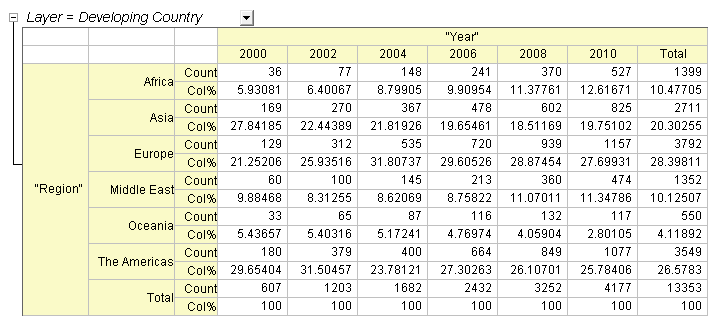

License: CC BY-SA: Attribution-ShareAlike Provided by: Mississippi University for Women. As a result, r 2 values are always in the range 0.0\leq values indicate how well straight lines fit data. The major difference is that r 2 values are always positive, regardless of whether the data are directly correlated or indirectly correlated. It tells you how well the graphed data fit a straight line. For most practical purposes, you can assume the r 2 value reveals essentially the same information as the r value. There is a distinction between the two in what they literally mean, but the distinction between r values and r 2 values is beyond the scope of this lab. In some graphs, rather than report correlation coefficients, or r values, the researchers report coefficients of determination, or r 2, values. Three graphs illustrating negative correlations with three degrees of fit of data to a straight line as indicated by their correlation coefficient’s r values.

The following three graphs represent positive correlations that show a perfect fit ( r = 1.0), a strong fit ( r = 0.90) and a non-existing fit ( r = 0.0).įigure 2-3. The closer the r value is to 0.0, the greater the likelihood that the two variables have no relationship with each other and no effect on one another. The closer the r value is to 1.0 or -1.0, the more convincing the fit. If a scientific graph has a line drawn through the data, it should always report the correlation coefficient for that line, so that the readers can see for themselves how well the data fit the line.

If there is no relationship between the two variables being plotted-if the one variable has no consistent relationship with the other-then the data is said to have a correlation coefficient of r = 0.0, and no correlation. It provides a comprehensive set of tools for scientists and engineers at every level to graphs, analyze, and books.
ORIGIN GRAPHING CORRELATION PRO
With a negative correlation, the two variables move in opposite directions. Origin Pro 2020 Crack is an interactive graphing and data analysis software that offers data analysis and graphing workspace for engineers and scientists. That means that when the first variable increases, the second variable decreases by the exact same proportion (if the first variable increases two-fold, the second variable decreases two-fold.) And when the first variable decreases, the second variable increases by the exact same proportion. When r = -1.0, there is a perfect negative correlation. With a positive correlation, the two variables move in the same direction. That means that when the first variable increases, the second variable also increases by the exact same proportion (if the first variable increases two-fold, the second variable increases two-fold.) And when the first variable decreases, the second variable also decreases by the exact same proportion. When r = 1.0, there is a perfect positive correlation. You cannot have anything better than a perfect fit, so 1.0 is the largest positive r value possible and -1.0 is the largest negative r value possible. If data fit perfectly on a line, then the correlation coefficient will be either r = 1.0 or r = -1.0. For various reasons, correlation coefficients are also known as “ r values.” Data rarely fit perfectly on a line, so the equations statisticians have developed report a correlation coefficient for the fit of the data to the line. A straight line has the equation y=mx+b, where m is the slope of the line and b is the y-intercept. The line you most often see data fit to in graphs is a straight line. Statisticians have developed equations to quantitate how well data fit onto lines with defined equations. If two variables are correlated, plotting them on a scatter plot should produce a straight-line relationship. For the operations involving function f, and assuming the height of f is 1.0, the value of the result at 5 different points is indicated by the shaded area below each point.How do you show a correlation even exists in the first place, in order to provide the first step in establishing a causal relationship? Usually you plot the two variables you think might be correlated. Visual comparison of convolution, cross-correlation and autocorrelation.


 0 kommentar(er)
0 kommentar(er)
